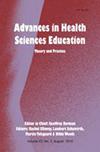What does consumer and community involvement in health-related education look like? A mixed methods study
Abstract
Consumer and community involvement (also referred to as patient and public involvement) in health-related curricula involves actively partnering with people with lived experience of health and social care systems. While health professions education has a long history of interaction with patients or consumers, a shift in the way consumer and community engage in health-related education has created novel opportunities for mutual relationships valuing lived experience expertise and shifting traditional education power relations. Drawing on a mixed methods design, we explored consumer and community involvement practices in the design and delivery of health-related education using the capability, opportunity, motivation and behaviour framework (COM-B). In our results, we describe educator capabilities, opportunities and motivations, including identifying barriers and enablers to consumer and community involvement in health-related education. Educators have varying philosophical reasons and approaches for involving consumers and community. There is a focus on augmenting student learning through inclusion of lived and living experience, and on mutual transformative learning through embedding lived experience and co-creating learning. How these philosophical positionings and motivations shape the degree by which educators involve consumers and community members in health-related curricula is important for further understanding these educational partnerships within universities.

 求助内容:
求助内容: 应助结果提醒方式:
应助结果提醒方式:


